Iceland sits astride the Mid-Atlantic Ridge, where the North American and Eurasian tectonic plates diverge. This geological setting means regular volcanic, tectonic, and glacial activity — lava flows, craters, fissures, geothermal heat, glaciers carving valleys. Over millennia, these forces have built a terrain of sharp contrasts: rugged lava fields, black volcanic sand, cliffs, and mountains juxtaposed with green mosses, rivers and glaciers. Golf courses in Iceland often draw on this raw terrain for character.
The climate also plays a part. Iceland’s summer days are long; around the solstice, golfers can play well into the night under the midnight sun. Winters are harsh, often limiting the golf season, but the contrast between the short, brilliant summers and long winters adds texture to playing there.
What Makes Icelandic Volcanic Golf Special
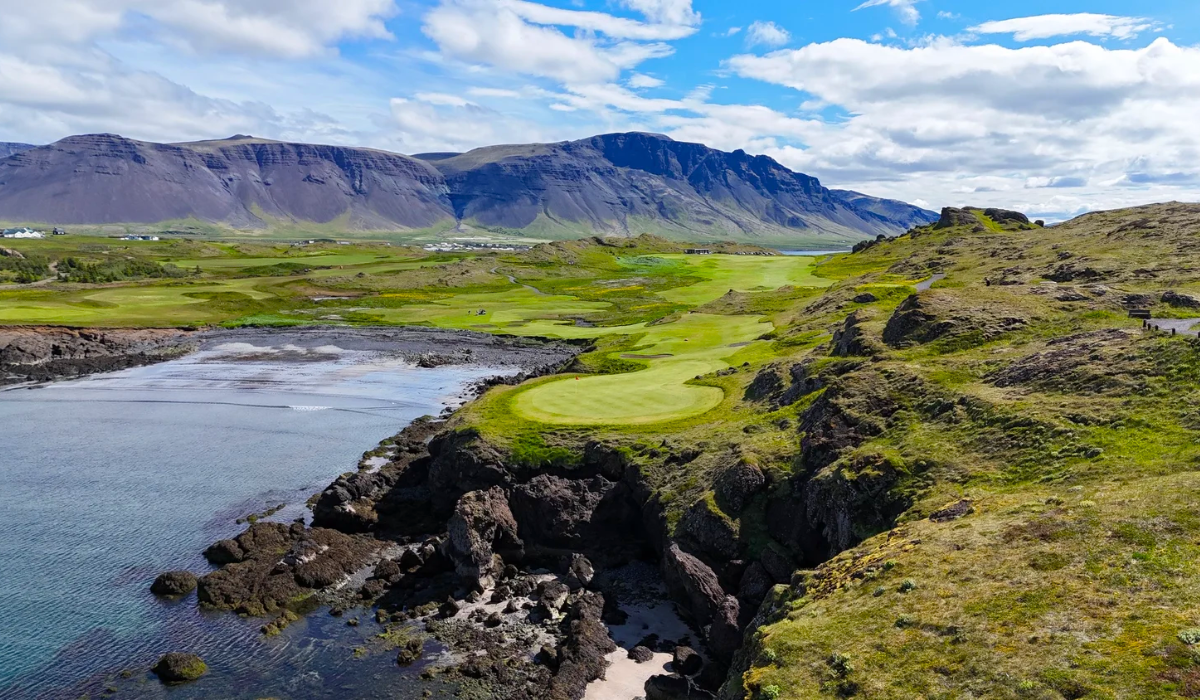
Golf courses built in volcanic settings in Iceland offer:
- Terrain shaped by lava flows: rugged rock outcrops, uneven ground, sometimes sharp ridges. Courses weave in and around old lava fields. Fairways might border or cross lava, or visit former farmland turned rough.
- Dramatic backdrops: extinct or dormant volcanoes, cliffs, or the sea just beyond the green. The scenery is seldom “typical golf course” — views include craters, volcanic walls, coastal cliffs, and glaciers in the distance.
- Variable and often strong winds: volcanic ridges and open sea force winds to change direction, making club selection and shot strategy more demanding.
- Unique turf and vegetation challenges: little tree cover in many areas; mosses, fescue grasses; black sand or lava near bunkers; marshy ponds in volcanic low points. Balls lost in rough lava formations are real possibilities.
Notable Volcanic Golf Courses in Iceland
Here are a few of the courses that best embody this volcanic spirit.
Vestmannaeyjar (Westman Islands) Golf Club


Built inside an old volcano (on Heimaey, the largest of the Vestmannaeyar islands), this 18-hole course is framed by steep volcanic cliffs and ocean. Holes play beneath towering crater walls, and sea breezes come into play. It is often praised for its greens, scenery, and the surreal feeling of being in such a raw natural bowl.
The History: the club was founded in 1938 as a 9-hole course; it was expanded later. It’s the southernmost golf club in Iceland and plays at ~5,820 yards, par 70.
Keilir Golf Club
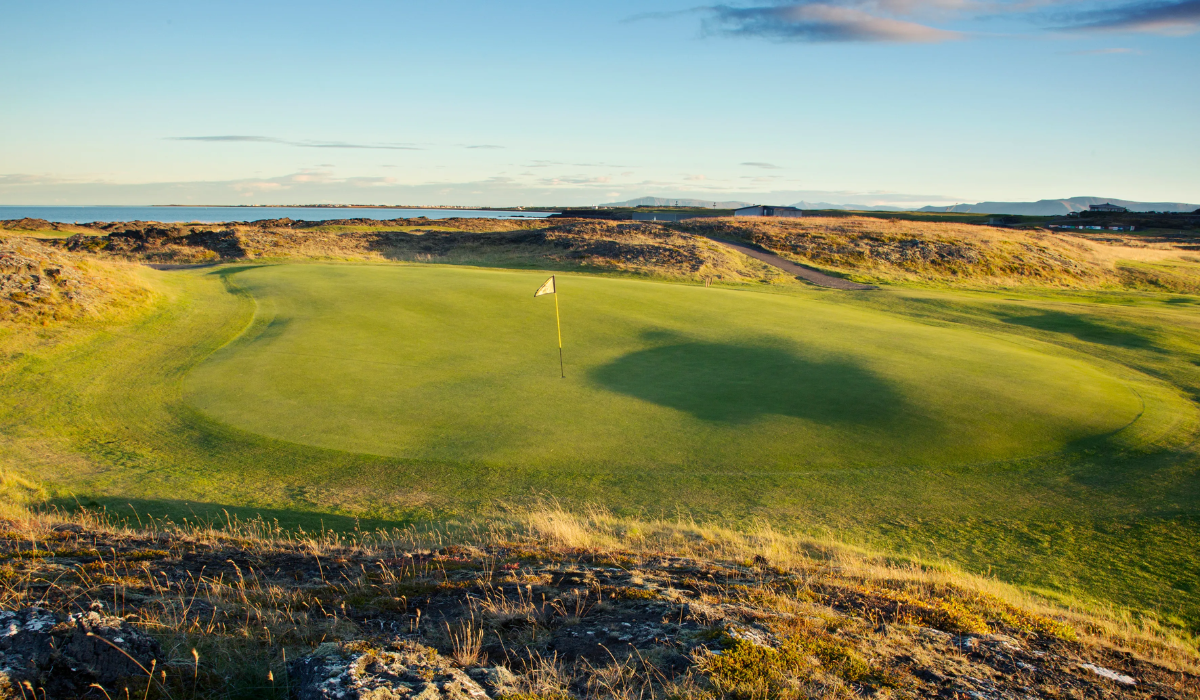

Situated on the Reykjanes Peninsula, near Reykjavik. Keilir’s front nine threads through lava fields: raw, black lava rock, rough, sometimes stark but beautiful. The back nine shifts to more forgiving former farmland, yet with views of the Atlantic. This dual personality of harsh lava and gentler terrain gives players a taste of everything volcanic golf can offer.
Keilir also hosts tournaments like the Amstel Light Iceland Open in cooperation with Reykjavik GC, often timed around the summer solstice.
Akureyri Golf Club
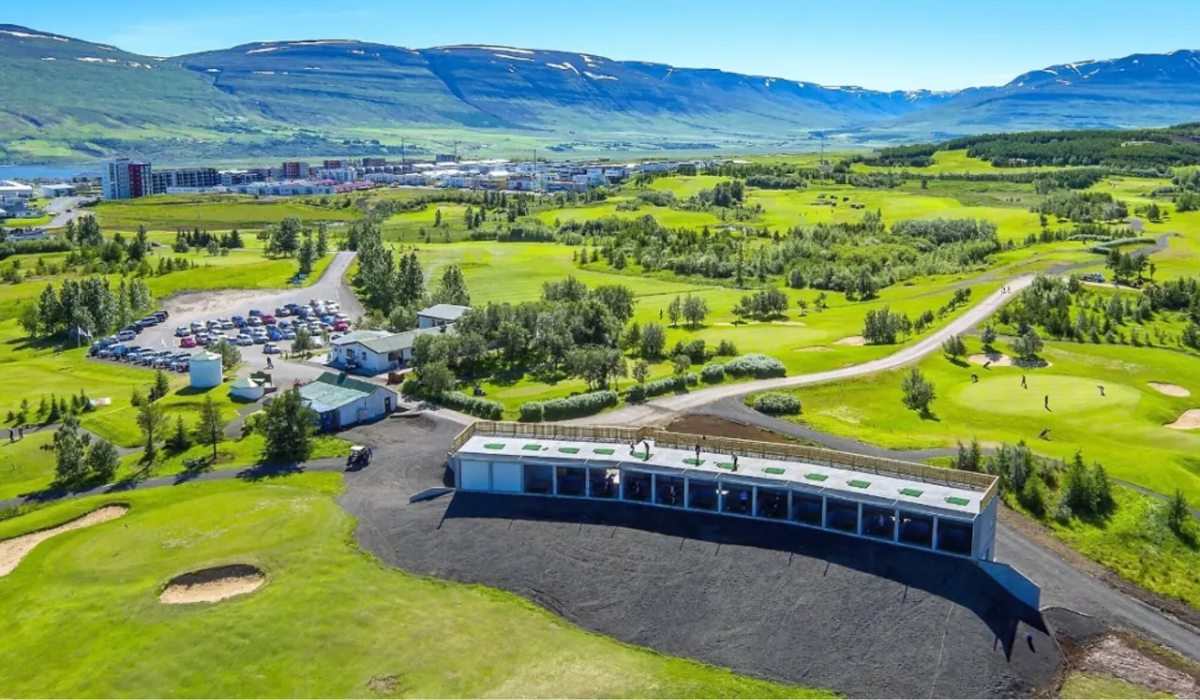

Up in the north, near the Arctic Circle, perched in a region that sees dramatic contrasts in light and weather. The course has rock outcroppings and ridgelines, and offers views over wide landscapes. Even though not all of Akureyri is strictly volcanic terrain, its setting gives the feel of remoteness and exposure. In summer, one can play in near-24-hour daylight.
Playing Tips & Considerations
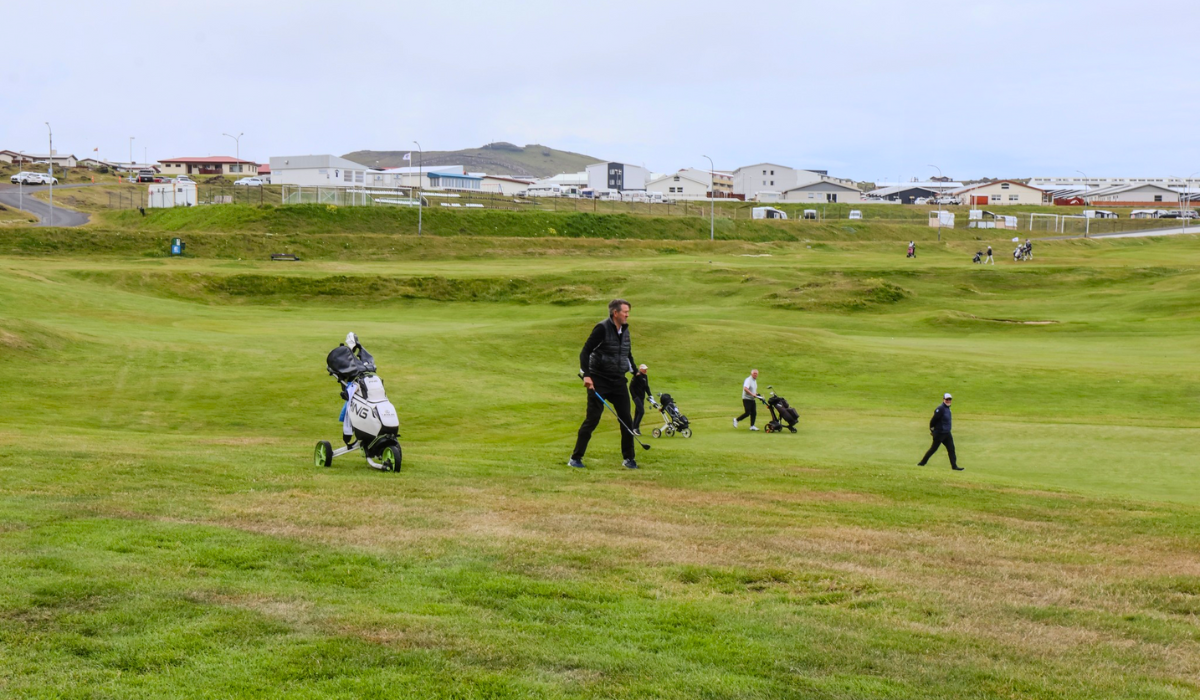

- Season & daylight: The playing season is limited, roughly late spring to early autumn. During midsummer, the daylight is abundant; in practice, you can tee off very early or very late. Winter play is rare or dependent on the weather.
- Weather & wind: It can change very quickly. A hole that seems sheltered may suddenly get a gust off a cliff or across lava. Being ready for sudden wind direction changes, keeping extra layers, and being adaptable are important.
- Course type: Some holes are firm and fast (especially on lava-altered soil), others are soft or moist, depending on drainage and underlying terrain. Club selection must account for both firm roll and uneven lies.
- Visual distraction: The scenery is spectacular — volcanoes, sea, glaciers. For some that’s part of the draw; for others, it can be a distraction. But many Icelandic courses use the visuals deliberately as part of the experience. Players must maintain focus.
- Equipment & footwear: Rough ground, sharp lava rock, moss, possibly wet patches or boggy ground in low volcanic terrain; good shoes, perhaps extra golf balls, repairing tools for ball marks or divots in rocky soil are useful.
The Cultural & Regional Context
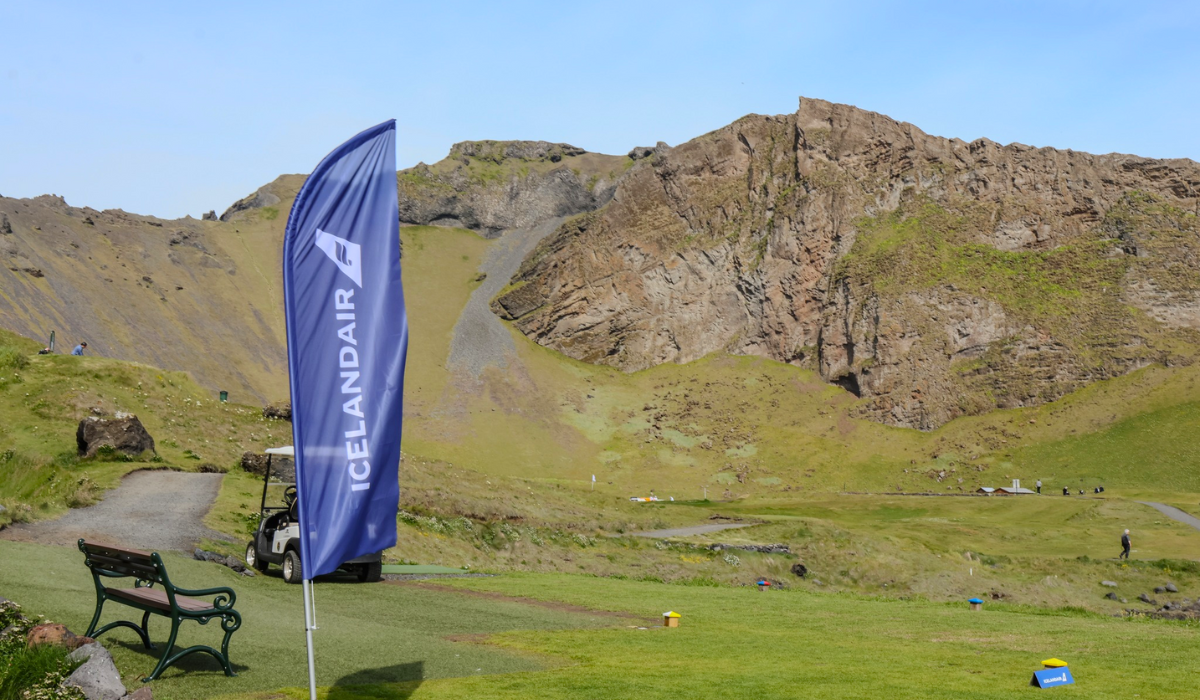

Golf in Iceland is less about tradition (compared to Scotland or Ireland) and more about nature, adventure, and landscape. Many locals relish the short but intense playing season and the opportunity to be outdoors in almost otherworldly settings. Icelandic golf’s identity is tied up with the land: volcanoes are ever-present, not distant stories but part of the view, often part of the hazard, sometimes part of the green.
Some courses carry names or tournaments that commemorate volcanic activity. For example, the Vestmannaeyjar Golf Club hosts the “Icelandair Volcano Open” in early July, in memory of the Eldfell volcano eruption of 1973 that dramatically affected Heimaey.
Also, volcanic geology sometimes shapes infrastructure: drainage, layout, and orientation. For instance, choosing tees and fairways to avoid the worst of lava flows, or integrating lava rock as features rather than trying to fully smooth them out.
Why It Matters — Not Just Novelty
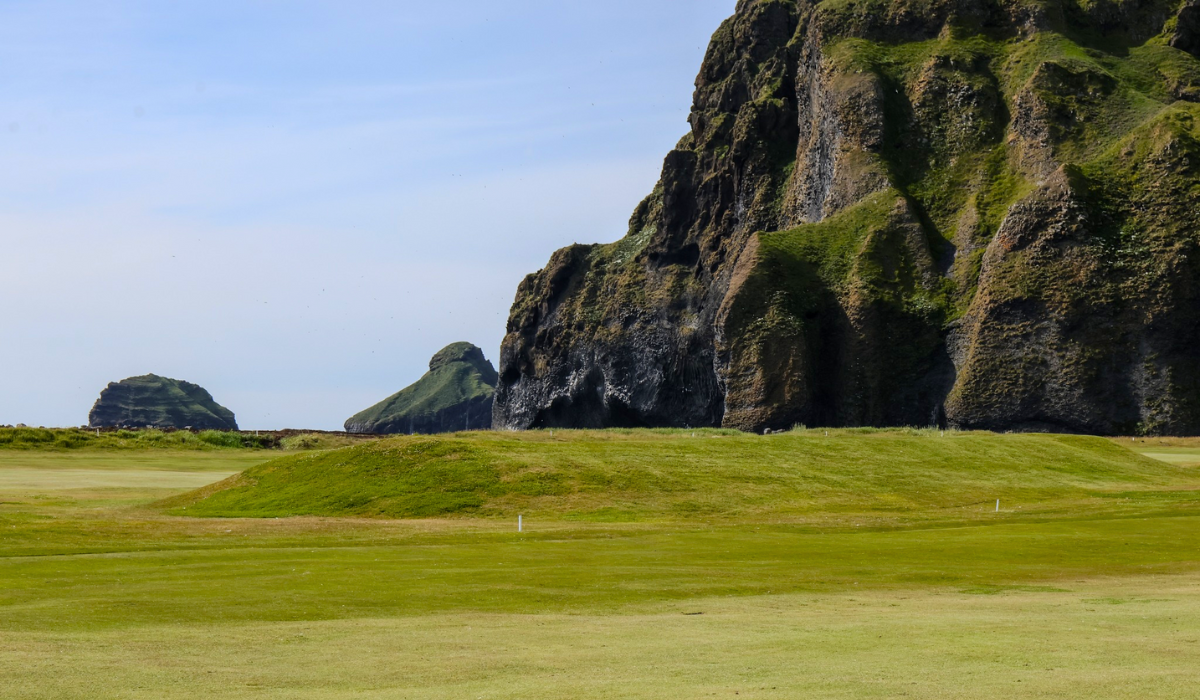

Volcanic golf in Iceland is not just about “cool views”. The terrain forces creativity in design and shotmaking. It offers a sensory contrast: smells of moss and sulphur, textures of rock vs grass, sound of wind and waves. It encourages respect for natural forces — glaciers, lava, weather — and invites awareness of geology. For many golfers, playing under the midnight sun with volcanoes and the ocean around is transformative rather than just another round.
Iceland, a True Golfing Adventure
Norway’s Golfing Elite: All Square’s Top 10 Courses


